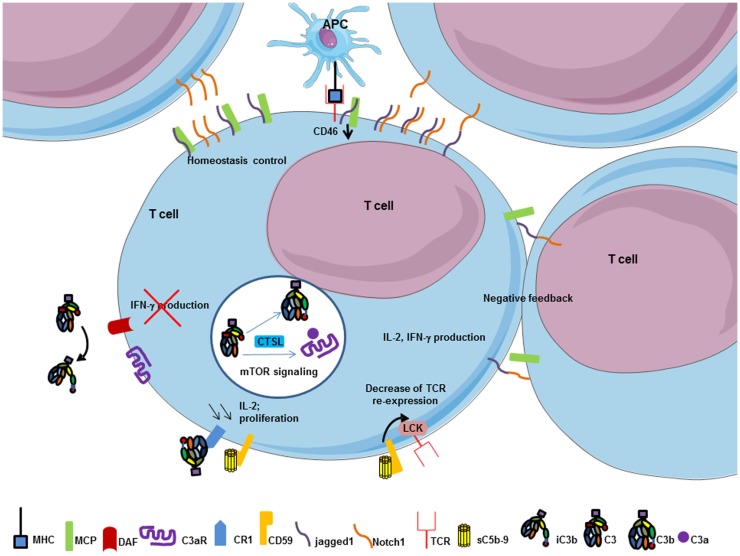Figure 8.
T cell response is modulated by complement components. MHC/TCR interaction between APC and T cell decrease CD46 expression on T cell and allows cis interaction between jagged1 and Notch-1 on T cell surface to promote T cell proliferation, IL-2, and IFN-γ production. Thereafter, trans interaction between jagged1 and Notch-1, and CD46 work as negative feedback to control T cell homeostasis. Soluble C5b–9 and CR1 regulate T cell activation. Interaction between soluble form of C5b–9 and its specific inhibitor CD59 on T cells decrease TCR re-expression after its internalization to limit T cell activation by transmitting a signal via Lck. CR1 activation by iC3b decreases IL-2 synthesis and proliferation of T cell to promote a negative feedback of T cell activation. CD55 engagement on T cells negatively regulates Th1 induction cells by inhibiting IFN-γ production. Intracellular C3 in T cell is cleaved by CTSL and promotes C3b and C3a intracellular generation. Interaction between C3a and C3aR induces mTOR signaling and survival signal of the immune cell.

